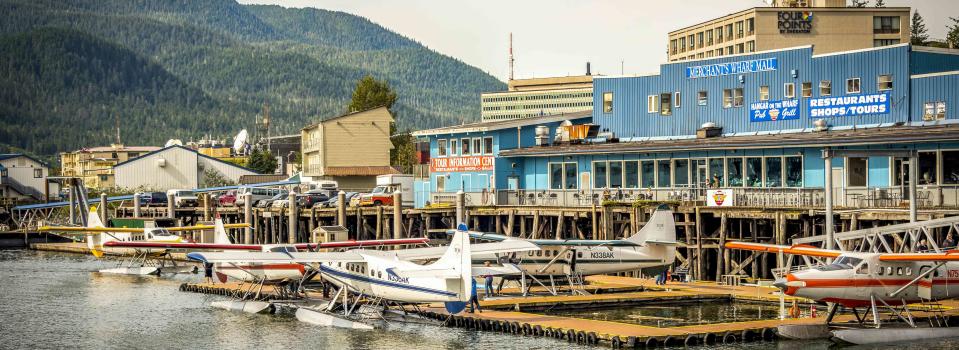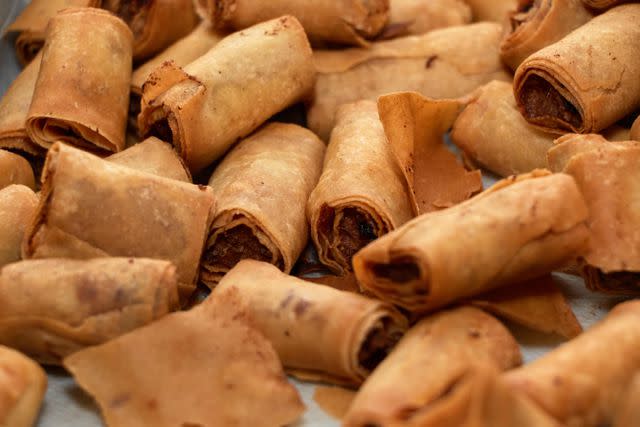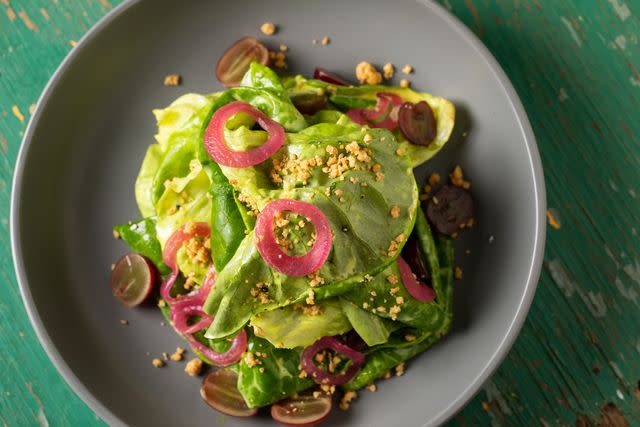This Alaska City Has a Thriving Filipino Food Scene—and It's Breeding a New Fusion Cuisine
Juneau has long been a hotspot for Filipino cuisine.

chaolik/Getty Images
When thinking of Alaskan cuisine, one may muster up thoughts of popular dishes like Alaskan king crab and Alaskan wild salmon, which are found on menus nationwide. Some may even think about lesser-known fare like reindeer sausage or fireweed chocolate. But a surprising element about Alaska's culinary scene is its Asian food.
While the Fairbanks area is riddled with Thai eateries, in Juneau, the state's capital, a different cuisine reigns supreme: Filipino food. From street food carts to sit-down service, Juneau is home to a long history of Filipino chefs and a wealth of new talent reinventing Filipino cuisine in the city.
The Origins of Filipino Eateries in Alaska
Alaska's Filipino community dates back to the late 1700s, with the biggest wave of Filipino immigration occurring in the early 1900s when the U.S. temporarily held colonial power over The Philippines.
Later, in the 1920s, more immigrants came to Alaska due to the boom of gold mining and an increase in cannery jobs. During this time, Filipinos were the largest immigrant group in Alaska, with Juneau and Ketchikan being the first permanent communities to stay after the fishing season ended. When the mines and the canneries closed for the season, the immigrants, who called themselves Alaskeros, had to figure out a different way to make money—and many families opened restaurants.
Today, Filipino immigration is still substantial in Alaska due to family ties and continued job opportunities. (In fact, Tagalog, the largest cultural-linguistic group in The Philippines, is the fourth most spoken language in the state.) And restaurants in Juneau are still owned by those same families, and their descendants, and serve dishes that have been passed down through generations.

klarion / 500px / Getty Images
How Filipino Cuisine Stood the Test of Time
The Carillo family descended from the original Alaskeros and own multiple restaurants around Juneau, including Valley Restaurant, a diner that has been serving Juneau locals for decades. There you’ll find popular Filipino dishes like adobo and lumpia. Their food cart can also be found downtown by the cruise port with a long line of people waiting for Filipino BBQ and dinuguan, a pork stew.
Valley Restaurant isn't alone in standing the test of time. Around town, you’ll find other traditional dishes like silog and sinagang at Golddigger and items like adobo and pancit at Kultura Sa Isla.
"What’s been exciting now is seeing the plethora of foods that are inspired by Filipino culture that I would still classify as Filipino foods because we’re using all these techniques from The Philippines, just changed in certain ways and it’s still delicious."
These traditional dishes and restaurants still thrive because of the role food plays in the Filipino community. "Like many cultures, food is just so important [to Filipinos]," Tasha Elizarde, a first-generation Juneau-raised Filipino-American who hosts a radio show called Halo Halo Talk where she interviews local Filipino chefs, told TripSavvy. "The way I connected to my Filipino identity and culture is often through food. Usually, because it was in a communal setting. Seeing the same foods, the same faces, over and over again, I connected them to family even if I wasn’t related to them.”
Elizarde said that the communal settings and dishes are a big part of the culture back in The Philippines as well. “It gets heightened when you’re part of the diaspora in the U.S.,” she said. “In Juneau, we have such a huge population of cruise workers and ferry workers who are often Filipino also. They come by and line up at those carts because it’s delicious and it reminds them of home.”

Courtesy of Travel Juneau
Filipino Dining Is Evolving in Juneau
While tradition brings comfort and familiarity, the new generation of Filipino chefs is bringing innovation and unique flavors to Filipino cooking. “There’s been this transformation the last 20 years," Elizarde said. "We would have a lot of traditional Filipino food being served—the things you would find at Carillo’s Caldo, The Valley, or Golddigger. But in the last few years, there’s been a lot of modern Filipino-American takes."
Rachel Carillo Barril, who is from the Carillo family and is Alaskero on both sides of her family, is a prime example. She is the chef de cuisine at In Bocca al Lupo, a Juneau-based Italian restaurant. While you'll find pasta and pizza on the main menu, Barrill is able to test out Alaskan-Filipino fusions on the seasonal menu. Think sweet and sour foraged greens or pasta with a miso sauce.
In Bocca al Luppo isn’t the only restaurant in town experimenting with new flavors. Black Moon Koven is a witchy cafe that sports black walls and psychedelic murals. It disguises its Filipino fusions behind mystical dish names like "Moon" and "Tarot" but includes undeniably Filipino ingredients like spam and pork belly. The cafe also offers “walking noodles,” which are healthier takes on traditional Filipino dishes.
So what makes Juneau’s Filipino food so exciting? According to Elizarde, it's the innovation. “What’s been exciting now is seeing the plethora of foods that are inspired by Filipino culture that I would still classify as Filipino foods because we’re using all these techniques from The Philippines, just changed in certain ways and it’s still delicious," she said.
One thing you’ll notice is how being in Alaska specifically influences the food. Traditional dishes like adobo or sinigang will include more salmon or other seafood. Restaurants are focusing on keeping it local and forage for fresh ingredients to use in their dishes which create a uniquely Alaskan flavor.
"Like many cultures, food is just so important to Filipinos. The way I connected to my Filipino identity and culture is often through food."
The rise in fusion food doesn't appear to be stopping. “I think that’s something that’s going to continue as more people learn about Filipino cuisine," said Elizarde. "What’s also exciting is seeing some of those flavors be incorporated in the cuisines of people who are not Filipino because it’s so entrenched into the community.”
This type of fusion is seen perhaps most prominently with Alaska’s Indigenous nations. The Tlingit Nation has created its own adobo which includes apple cider vinegar and pickling spice. The Utqiagvik people have made whale lumpia, which is as Alaskan as it is Filipino.
The Alaska-Filipino connection continues to be strong through decades of sharing a meal. The Filipino cuisine in Juneau encapsulates this relationship with family-owned restaurants serving time-tested comfort food and up-and-coming chefs creating dishes inspired by their neighbors just as much as they are by local ingredients.
Read the original article on TripSavvy.

